WOKKA by Genshang Restaurant
Tens Atelier focused on a simple, practical aesthetic for WOKKA by Genshang in Shanghai, using natural elements and greenery, creating a welcoming environment for commuters.
The restaurant is located in Uni Elite Plaza of Shanghai’s Xintiandi sector, adjacent to Madang Road. The original brand focuses on Japanese simple food + afternoon tea, although the product is good and has a group of customer base, but the business operation is not clear, the number of seats is relatively small, and the overall decoration is also facing the problem of aging. The brand was then upgraded in all aspects, with the format shifting to a western restaurant model more popular with the surrounding commuters, hence the disruptive design changes.
The restaurant is strategically located, with the secondary entrance on the Madang Road side and the main entrance on the inner street of the shopping centre. In order to differentiate itself from the neighbouring shops, the design of the street facade adopts a more restrained approach, with a large white stream stone paired with small blue bricks as the main element of the entire building facade, which is simple and elegant in the midst of the bustling street-level shops.
The designer wanted the whole space to adhere to the principles of simplicity, minimalism and practicality, so the design eschewed ostentatious decorations. With a focus on simple and rustic materials, clear-grained elm wood, warm-coloured diatom mud, and blue bricks for outdoor use, people are able to deeply feel the beauty given by the materials themselves.
As the restaurant is well lit, the design does not want to completely block off the restaurant from the outside. Looking at the restaurant from the inner street of the shopping mall, the large open window makes the indoor and outdoor spaces of the restaurant intermingle with each other, maximising the introduction of natural light into the interior without blocking the view of the indoor and outdoor crowds, and creating a visual relationship between the “seeing” and the “being seen”. The designers added a lot of greenery to the outreach area to create a green atmosphere, while the customised greenery box also serves as an enclosure to define the business area.
In terms of spatial attributes, the area of the restaurant’s folding window is treated as an outdoor space, and through the selection and treatment of materials, it is made to be more in tune with the natural environment and expresses the affectionate feelings towards nature. The floor is made of small blue bricks used outdoors, whose untouched seams create a natural and rustic feel. For the walls, elm wood was chosen as a decorative material, which is often used in outdoor environments. In addition, the designer deliberately designed the ceiling of this area to be lower and enlarged the countertop of the folding window area to weaken the boundaries between inside and outside, creating a free space, aiming to provide a third space for the residents of the neighbouring office buildings and communities. In practice, this “gray space” has become one of the most popular areas of the shop.
The open space layout has a clear ceiling height of 4.5 m. In order to maximize the use of the floor height, the designer used different ceiling heights to divide different areas – the bar area and the dining area. The design of different elevation heights also increases the sense of spatial hierarchy, while the sliding lighting system is hidden in the elevation of the ceiling moulding, visually making the ceiling more clean and simple. The aisle serves as a transition between the two areas, so the designer used the element of a million mirrors on the ceiling of the aisle, and through the refraction of the mirrors at different angles, the two main areas are blended together, making the space more unified and harmonious.
As the design of the space revolves around nature and relaxing tones, many of the soft furnishings were selected in collaboration with the owners, including tableware in green tones, relaxing and casual tapestries, a happy tree at the centre of the space, as well as a wide range of tables and chairs and many types of artistic lamps. Meanwhile, enough sockets have been added to the space to meet the needs of the mobile office, which is undoubtedly a sacrifice for the restaurant, and after many communications with the owner, these points were eventually retained in the hope that it can give the commuters a space to relax and come and go.
Design: Tens Atelier
Design Team: Tan Chen, YUI, Li Zhengzhi, Guo Ankey, Li Chao, Liu Leon
Contractor: Shanghai First Construction Service Co.
Photography: half.half.




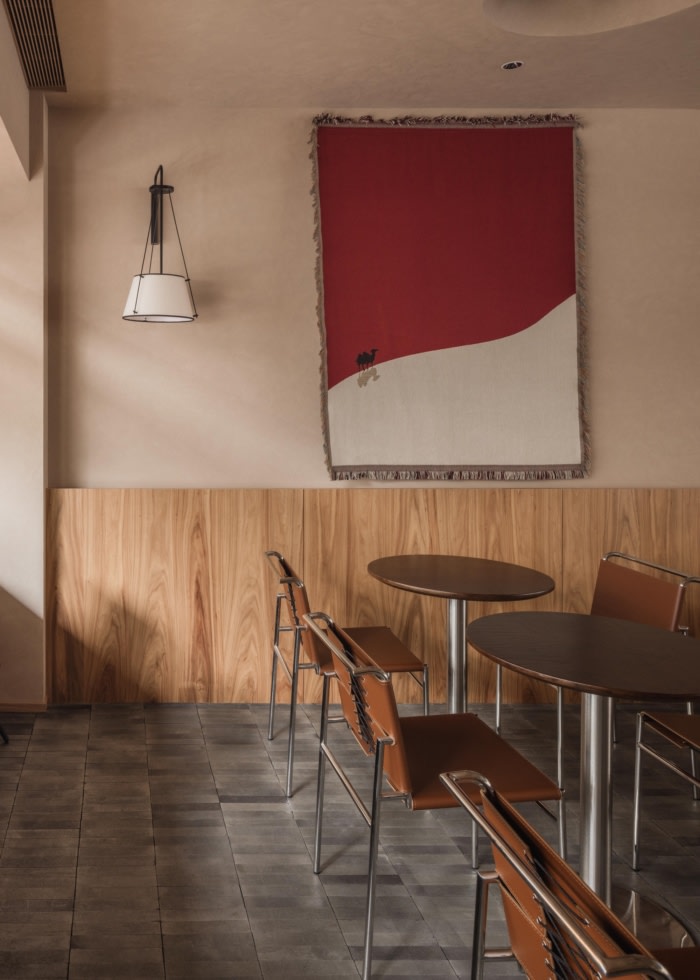
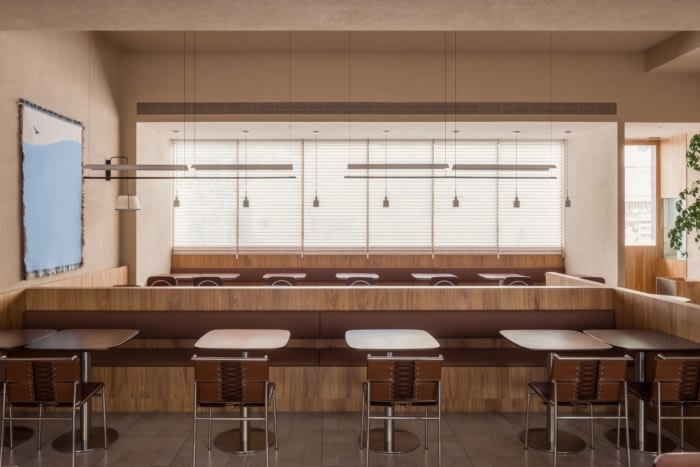

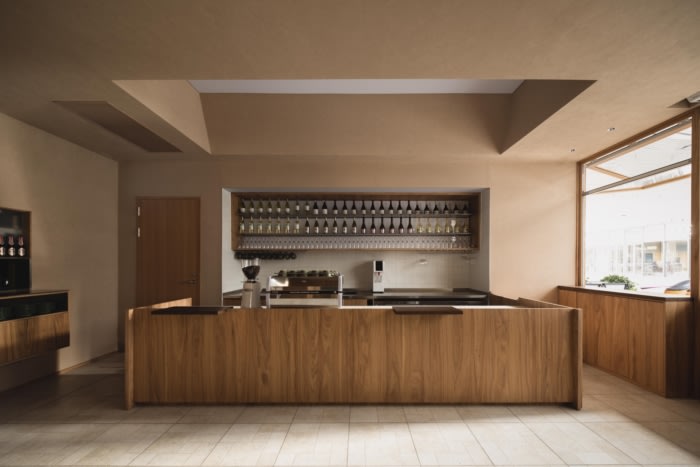
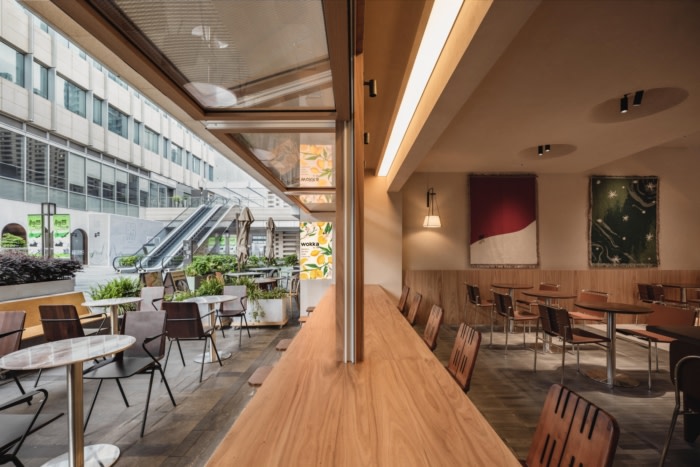
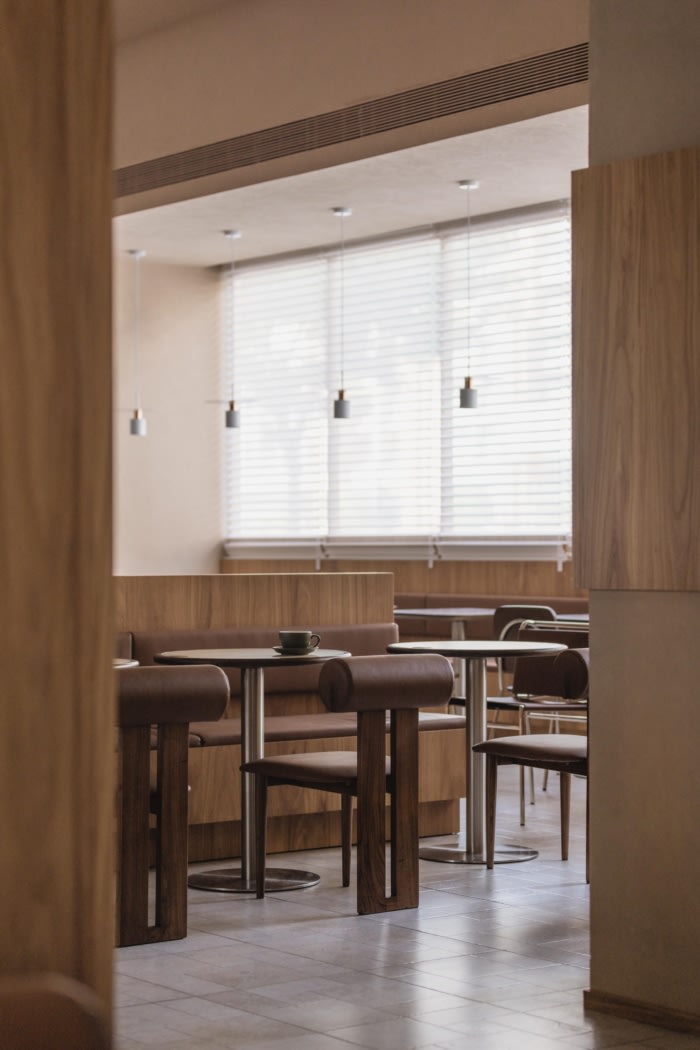
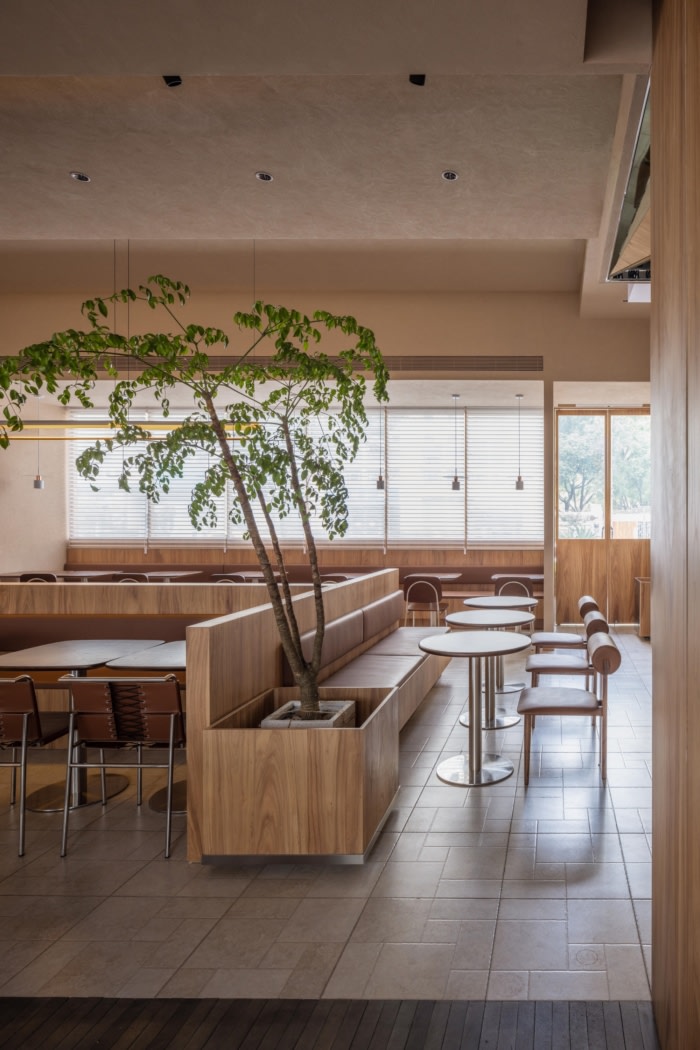
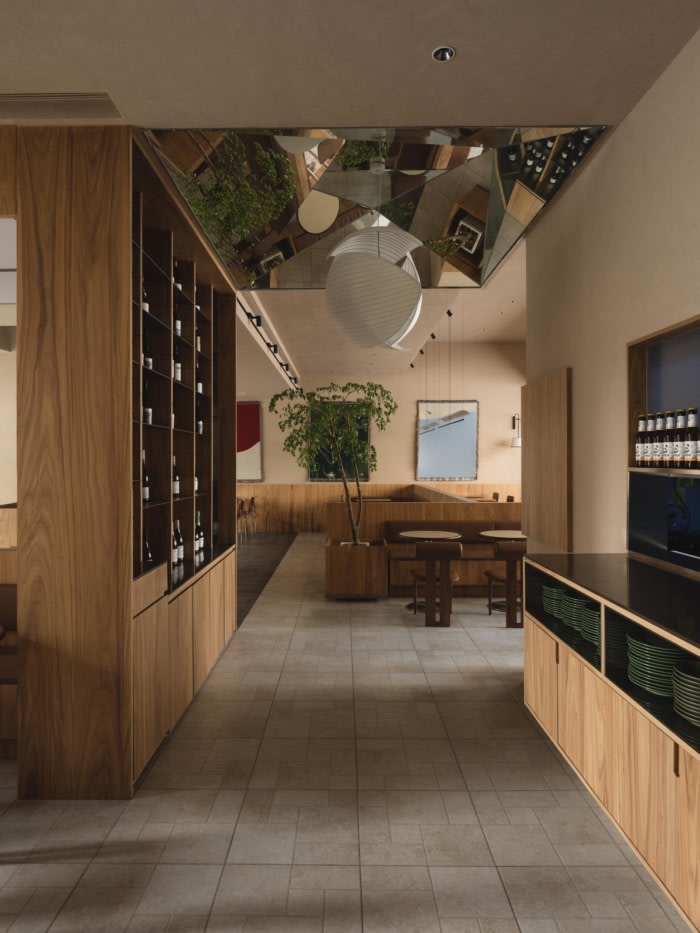
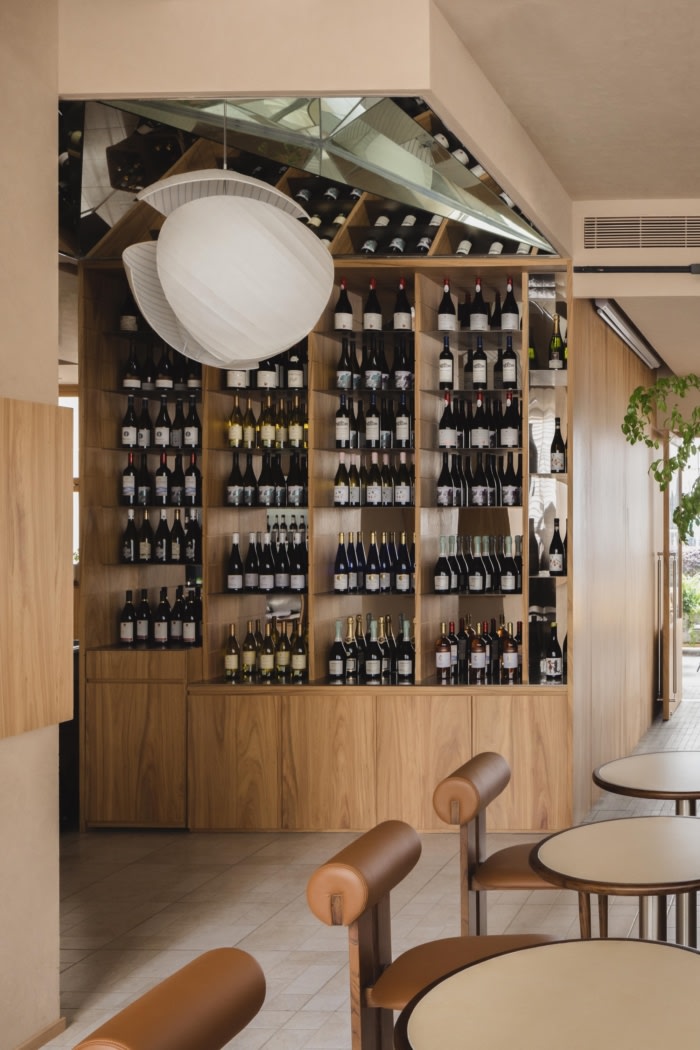
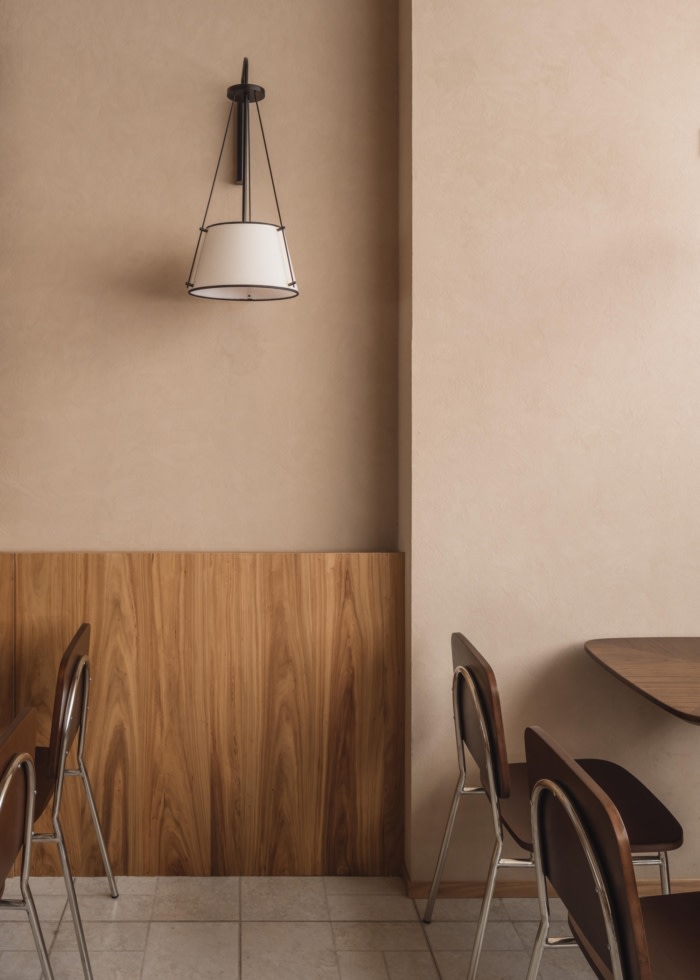






Now editing content for LinkedIn.